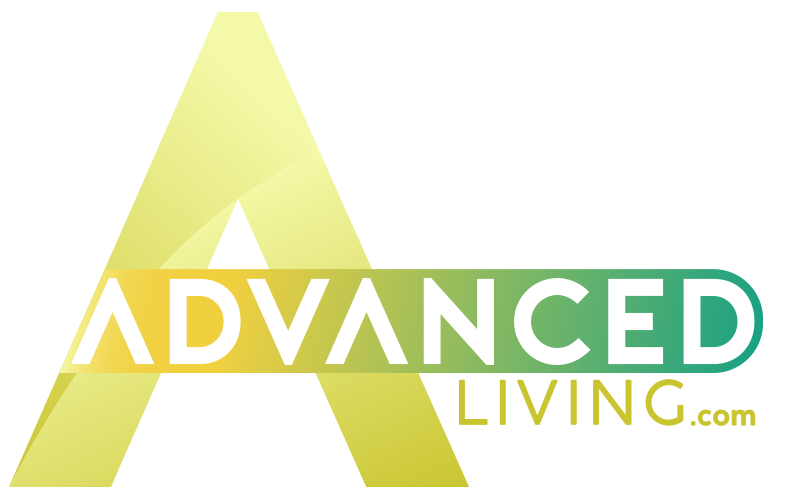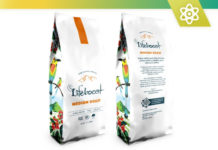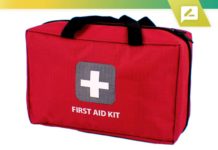The term “core strength” frequently surfaces in fitness and athletic performance. Yet, many still underestimate its significance or misunderstand its true nature, often equating it solely with abdominal muscles. However, core strength encompasses so much more, involving a network of muscles that provide a foundation for both everyday movements and peak athletic performance.
Understanding core strength and its broader implications requires a deep dive into the anatomy of these muscles, their functions, and the profound benefits they offer. This article will explore the various aspects of core strength, its importance, and practical tips for effective core training to enhance overall well-being and athletic prowess.
Unveiling the Core: A Complex Network
Contrary to popular belief, the core is not just about having toned abs. The core is a complex network of muscles extending beyond the abdominals, including back, pelvis, hips, and diaphragm muscles. This comprehensive musculature serves as the body's central support system.
The core is made up of both stabilizer muscles and mover muscles. Stabilizers, such as the transversus abdominis and the multifidus, attach directly to the spine and support its movement, ensuring stability. Meanwhile, mover muscles like the rectus abdominis and the external obliques work alongside stabilizers to facilitate a wide range of movements. This cooperative interaction between different muscle groups enables the body to perform complex movements with precision and control.
According to the Orthopedic & Sports Medicine Institute (OSMI), the core has 29 muscles, each contributing to overall stability and strength. This intricate system is vital for maintaining balance and posture and performing everyday tasks efficiently.
The Importance of Core Strength
Enhanced Stability and Balance
One of the core's most critical functions is stabilizing the spine and pelvis. When these muscles are strong, they provide a solid base of support, enabling efficient movement and balance. This stability is crucial for both athletes and non-athletes alike. Whether running, jumping, or simply walking, a robust core ensures that your body remains balanced and controlled.
Injury Prevention
A weak core is often the culprit behind poor posture, lower back pain, and an increased risk of injury. The Mangiarelli Rehabilitation emphasizes that core muscles anchor the body's center of gravity. When these muscles are weak, other muscles must compensate, often leading to overuse injuries. Strengthening the core can mitigate these risks by providing adequate support and reducing the strain on other parts of the body.
Improved Athletic Performance
Core strength is particularly significant for athletes. Research has shown that a strong core enhances various aspects of athletic performance, including power, speed, agility, and endurance. A study conducted in 2023 assessed 169 athletes, revealing that those who engaged in core training demonstrated notable improvements in sport-specific abilities compared to those who only did traditional strength training.
The core plays a central role in virtually every athletic movement. It acts as a bridge, transferring energy from the lower to the upper body and vice versa. This transfer of energy is essential for movements such as throwing, kicking, and sprinting. A strong core can enhance an athlete's ability to generate force and perform efficiently, leading to better overall performance.
Optimal Breathing and Endurance
The diaphragm, a key breathing muscle, is also part of the core. Strengthening the core muscles can improve breathing efficiency, enhancing aerobic capacity and endurance. This particularly benefits endurance athletes, such as long-distance runners and cyclists, who rely on optimal breathing for sustained performance.
Core Strengthening Exercises
To achieve a strong and functional core, it is essential to incorporate various exercises that target different muscle groups within the core. Here are some effective core strengthening exercises:
Planks
Planks are one of the most effective exercises for core strengthening. They engage multiple core muscles, including the abdominals, back, and shoulders. To perform a plank, start in a push-up position with your forearms on the ground. Keep your body in a straight line from head to toe, engaging your core and holding the position for as long as possible.
Russian Twists
Russian twists target the obliques and help improve rotational strength. Sit on the ground with your knees bent and feet flat. Lean back slightly and lift your feet off the ground. Holding a weight or a medicine ball, twist your torso to the right, then to the left, alternating sides.
Dead Bugs
Dead bugs are excellent for activating the deep core muscles. Lie on your back with your arms extended towards the ceiling and your knees bent at a 90-degree angle. Slowly lower your right arm and left leg towards the ground, pressing your lower back into the floor. Return to the starting position and repeat on the other side.
Bicycle Crunches
Bicycle crunches effectively target the rectus abdominis and obliques. Lie on your back with your hands behind your head and your knees bent. Lift your shoulders off the ground and bring your right elbow towards your left knee while extending your right leg. Alternate sides in a pedaling motion.
Bridges
Bridges focus on the glutes and lower back. Lie on your back with your knees bent and feet flat on the ground. Lift your hips towards the ceiling, squeezing your glutes at the top. Lower back down and repeat.
Side Planks
Side planks engage the obliques and help improve lateral stability. Lie on your side with your legs extended and your forearm on the ground. Lift your hips off the ground, creating a straight line from head to toe. Hold the position and repeat on the other side.
Integrating Core Training into Your Routine
To maximize the benefits of core training, it is essential to integrate these exercises into your regular fitness routine. Aim to perform core exercises at least three times a week, incorporating a mix of static and dynamic movements. In addition, consider the following tips to enhance your core training:
Warm-Up and Cool Down
Always start your workout with a proper warm-up to prepare your muscles and joints for exercise. A good warm-up increases blood flow to the muscles, reduces the risk of injury, and improves overall performance. Similarly, cooling down after your workout helps in muscle recovery and flexibility.
Progressive Overload
To continue progressing, gradually increase the intensity and difficulty of your core exercises. You can achieve this by increasing the duration of holds, adding resistance, or incorporating more challenging variations of the exercises.
Focus on Form
Proper form is crucial for effective core training. Ensure that you engage the correct muscles and maintain proper alignment throughout each exercise. Poor form can lead to injuries and reduce the effectiveness of the workout.
Combine with Compound Movements
Incorporate compound movements, such as squats and deadlifts, into your strength training routine. These exercises engage multiple muscle groups, including the core, and provide a comprehensive workout.
Listen to Your Body
Pay attention to how your body responds to core training. If you experience pain or discomfort, modify the exercises or seek guidance from a fitness professional. It is essential to challenge yourself, but not at the expense of your safety and well-being.
The Debate: Compound vs. Isolated Exercises
In the fitness community, there is ongoing debate about whether compound exercises or isolated exercises are more effective for core training. Compound exercises, such as squats and deadlifts, work multiple muscle groups simultaneously and are often considered superior for overall strength development. Research indicates that weighted total-body movements are generally more effective at building core strength than traditional abs-focused exercises like sit-ups and crunches.
However, this does not mean that isolated exercises are without merit. Isolated exercises can be particularly useful for addressing weaknesses or imbalances within the core. For example, if you have weak pelvic floor or hip abductors, targeted exercises can help strengthen these areas and improve overall core stability.
Choosing between compound and isolated exercises may depend on individual fitness levels and goals. A well-rounded core training program should ideally include a combination of both types of exercises to ensure comprehensive development.
Core Training for Athletes: A Path to Peak Performance
Core training is beneficial and essential for athletes. Competitive sports require a high level of core strength to perform optimally and reduce the risk of injury. Several studies have highlighted the positive impact of core training on various aspects of athletic performance.
Enhancing Sport-Specific Skills
While some studies show mixed results regarding the direct impact of core training on sport-specific skills like speed and power, there is evidence that it significantly improves core endurance and balance. These improvements translate into better stability and control during athletic movements, indirectly enhancing overall performance.
For instance, core training improved core endurance and maximal isometric strength in handball players, although it did not significantly affect throwing speed. Similarly, core training enhanced agility but not speed in soccer players. These findings suggest that core training is more effective for improving foundational athletic qualities, which are crucial for peak performance in various sports.
Designing Effective Core Training Programs
To maximize the benefits of core training, athletes should follow a structured program incorporating gradually increasing difficulty levels. A well-designed program should include exercises targeting all core muscle groups, stabilizers, and movers. It should also balance static and dynamic movements to develop strength and endurance.
Athletes can also benefit from sport-specific core exercises that mimic the movements required in their sport. For example, a swimmer might perform rotational exercises to enhance core stability during strokes, while a basketball player might focus on exercises that improve explosive power and agility.
Core Training in Rehabilitation
Core training is not limited to enhancing performance but also plays a crucial role in rehabilitation. Athletes recovering from injuries often incorporate core exercises into their rehabilitation programs to rebuild strength, improve stability, and prevent future injuries. By focusing on the core, they can ensure a more comprehensive recovery and return to their sport with a reduced risk of re-injury.
Core Strength in Daily Life
Beyond athletic performance, core strength is essential for everyday activities. From carrying groceries to lifting children, a strong core facilitates various daily tasks easily and reduces the risk of injury. It also contributes to better posture, reducing the strain on the spine and preventing issues such as lower back pain.
Maintaining core strength is vital for overall health and well-being for individuals of all ages. It supports functional movements, enhances mobility, and improves the quality of life. Whether an athlete or a non-athlete, investing time in core training can yield significant long-term benefits.
Conclusion
Core strength is the foundation of a healthy, functional, and active life. It underpins everything from athletic performance to daily activities, offering a wide range of benefits that extend beyond mere aesthetics. By understanding the comprehensive nature of the core and incorporating effective training strategies, individuals can enhance their stability, balance, and overall physical performance.
To sum up, the core is more than just the abdominals; it is an intricate network of muscles that play a crucial role in supporting and moving the body. Strengthening these muscles through compound and isolated exercises can improve athletic performance, prevent injuries, and enhance overall well-being. For a well-rounded fitness routine, core training should be an integral component, providing the foundation for other physical activities. For more information on the importance of core strength, visit Live Science.
As you embark on your journey towards better core strength, remember that consistency, proper form, and a balanced approach are key. With dedication and the right training, you can achieve a strong and resilient core that supports you in all aspects of life.













![Bowflex Max Total: 2024 Fitness Workout Exercise Machine [Review] Bowflex Max Total: 2020 Equipment Review For Complete Upper and Lower Body Workout](https://www.advancedliving.com/wp-content/uploads/2019/12/Bowflex-Max-Total-218x150.jpg)


